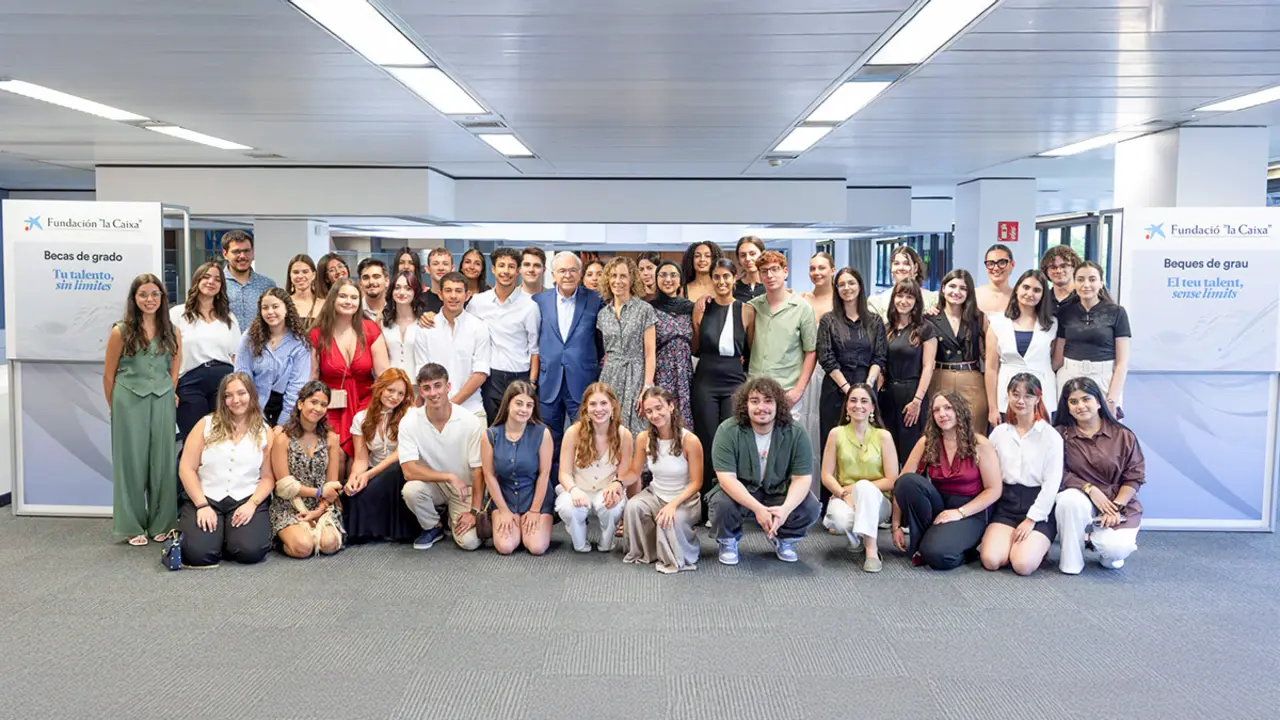A non-invasive test can detect meningitis in children

- Current diagnosis: invasive and impractical
- The alternative: an ultrasound device
- Artificial Intelligence and the future of diagnosis
A high-resolution ultrasound device has demonstrated high accuracy in detecting suspected cases of meningitis in newborns and infants, which could represent a non-invasive alternative to lumbar puncture, the traditional diagnostic method.
This is the main conclusion of an international study led by the Barcelona Institute for Global Health (ISGlobal), a centre promoted by the ”la Caixa” Foundation, in collaboration with hospitals in Spain, Mozambique and Morocco.
Meningitis is an inflammation of the membranes covering the brain and spinal cord. When caused by bacteria or fungi, it can be fatal if not diagnosed and treated early. Even in cases where the disease is overcome, serious sequelae such as neurological impairment or cognitive disorders may remain.
Despite medical advances in recent decades, meningitis remains a serious threat to children's health, especially in low- and middle-income countries, where difficulties in early diagnosis exacerbate its impact.
Current diagnosis: invasive and impractical
Currently, the diagnosis of meningitis requires a lumbar puncture to obtain cerebrospinal fluid, which is then analysed in a laboratory for signs of inflammation, such as a high white blood cell count. This is an invasive technique with associated risks and significant practical limitations.
In high-income countries, it is routinely performed even in cases of low suspicion, resulting in a large number of ‘normal’ procedures and poor diagnostic performance. In contrast, in low-income countries, lack of resources means that the test is rarely performed, leading to significant underdiagnosis or, in many cases, empirical and often inaccurate diagnoses.
The alternative: an ultrasound device
The aim of the study was to validate the NEOSONICS device, which uses high-frequency ultrasound applied through the baby's open fontanelle—a membranous space between the bones of the skull that has not yet closed—to visualise and analyse the cerebrospinal fluid.
A deep learning algorithm analyses the images, visualises and counts the cells, and determines whether there are inflammatory signs consistent with meningitis.
The study, funded by the Bill and Melinda Gates Foundation, was conducted between 2020 and 2023 and included more than 200 babies up to 24 months old from the Sant Joan de Déu, La Paz and Quironsalud hospitals in Spain, as well as the Central Hospital in Maputo (Mozambique) and the Rabat-Ibn Sina Children's Hospital (Morocco).
‘The device was able to correctly classify 17 out of 18 cases with meningitis and 55 out of 58 controls without meningitis,’ explains Sara Ajanovic, researcher at ISGlobal and lead author of the study. ‘Specifically, it detected elevated white blood cell levels in the cerebrospinal fluid with approximately 94% sensitivity and 95% specificity.’
The new device—cost-effective, portable and easy to use—would not only reduce the number of lumbar punctures, but could also be used in clinically unstable patients, where a lumbar puncture is contraindicated.
‘The introduction of a non-invasive tool could reduce the unnecessary use of antibiotics, prevent complications associated with lumbar punctures, and improve early diagnosis and non-invasive monitoring of treatment response,’ explains Quique Bassat, CEO of ISGlobal, ICREA researcher and senior author of the study.
Artificial Intelligence and the future of diagnosis
The validation of NEOSONICS represents a first step towards its future incorporation into clinical practice. At the same time, other studies coordinated by ISGlobal are exploring the potential of integrating Artificial Intelligence (AI) with ultrasound technology to optimise the interpretation of results.
Thanks to the use of advanced algorithms, AI can analyse image metrics and detect texture patterns associated with the presence of inflammatory cells in the cerebrospinal fluid, thereby improving the system's diagnostic capability in cases of paediatric meningitis.








